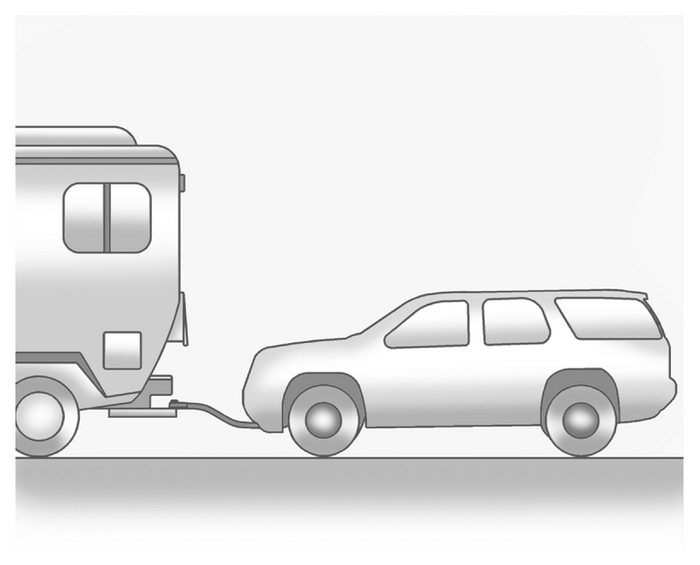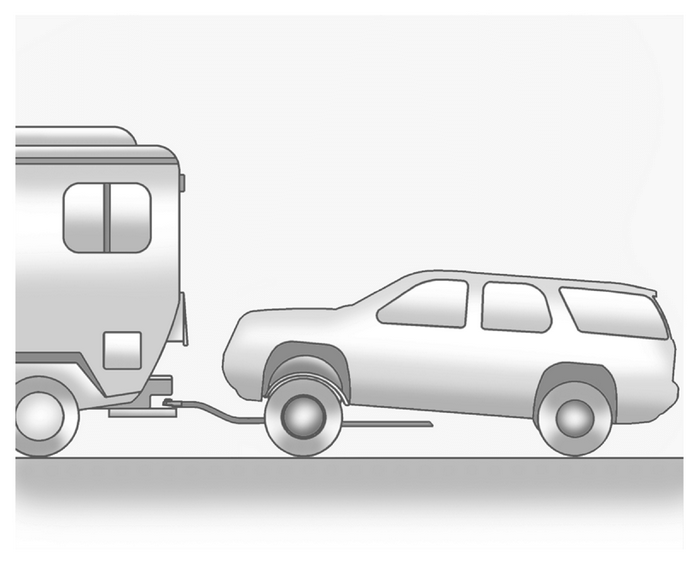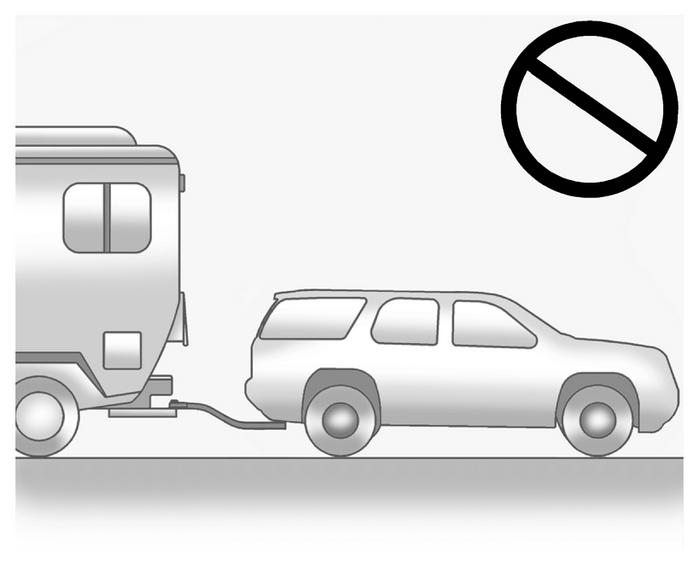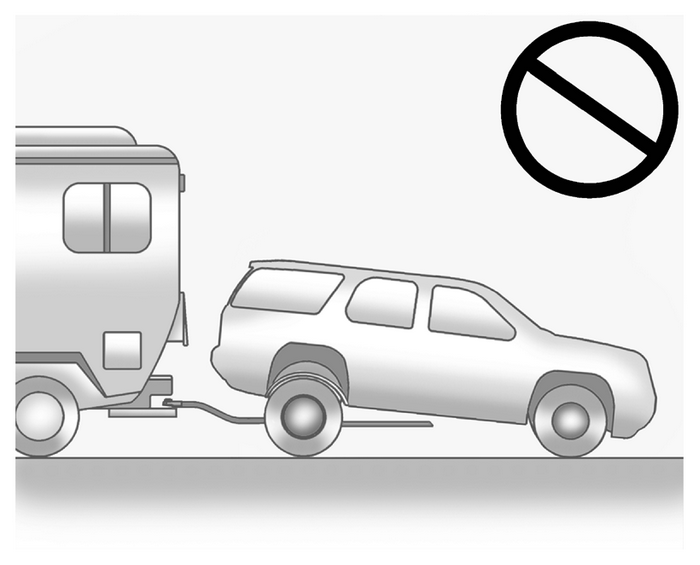Chevrolet Equinox Service Manual: Recreational Vehicle Towing
Recreational vehicle towing means towing the vehicle behind another vehicle – suchas behind a motor home. The two most common types of recreational vehicle towing areknown as dinghy towing and dolly towing. Dinghy towing is towing the vehicle withall four wheels on the ground. Dolly towing is towing the vehicle with two wheelson the ground and two wheels up on a device known as a dolly.
Here are some important things to consider before recreational vehicle towing:
The towing capacity of the towing vehicle. Be sure to read the tow vehicle manufacturer'srecommendations.How far the vehicle will be towed. Some vehicles have restrictions on how far andhow long they can tow.The proper towing equipment. See your dealer or trailering professional for additionaladvice and equipment recommendations.If the vehicle is ready to be towed. Just as preparing the vehicle for a long trip,make sure the vehicle is prepared to be towed.Dinghy TowingFront-wheel-drive and all-wheel-drive vehicles may be dinghy towed from the front.These vehicles can also be towed by placing them on a platform trailer with all fourwheels off of the ground. For other towing options, see “Dolly Towing” following inthis section.
For vehicles being dinghy towed, the vehicle should be run at the beginning of eachday and at each RV fuel stop for about five minutes. This will ensure proper lubricationof transmission components.

To tow the vehicle from the front with all four wheels on the ground:
Position the vehicle to be towed and secure it to the towing vehicle.Turn the ignition key to ON/RUN.Shift the transmission to N (Neutral).Turn the ignition key to ACC/ACCESSORY.Turn all accessories off.To prevent the battery from draining while the vehicle is being towed, remove fuse32, the Discrete Logic Ignition Switch fuse, from the instrument panel fuse blockand store it in a safe location. SeeInstrument Panel Fuse Block.Caution:If the vehicle is towed without performing each of the steps listed under “DinghyTowing,” the automatic transmission could be damaged. Be sure to follow all stepsof the dinghy towing procedure prior to and after towing the vehicle.
Caution:If 105-km/h (65-mph) is exceeded while towing the vehicle, it could be damaged. Neverexceed 105-km/h (65-mph) while towing the vehicle.
Once the destination is reached:
Set the parking brake.Shift the transmission to P (Park).Turn the ignition key to LOCK/OFF.Install fuse 32, the Discrete Logic Ignition Switch fuse. SeeInstrument Panel Fuse Block.Start the engine and let it idle for more than three minutes before driving the vehicle.Caution:Do not tow a vehicle with the front drive wheels on the ground if one of the fronttires is a compact spare tire. Towing with two different tire sizes on the front ofthe vehicle can cause severe damage to the transmission.
Dolly Towing (All-Wheel-Drive Vehicles)All-wheel-drive vehicles should not be towed with two wheels on the ground. To properlytow these vehicles, they should be placed on a platform trailer with all four wheelsoff of the ground or dinghy towed from the front.
Dolly Towing (Front-Wheel-Drive Vehicles)
To tow the vehicle from the front with the rear wheels on the ground, do the following:
Put the front wheels on a dolly.Move the shift lever to P (Park).Set the parking brake.Secure the vehicle to the dolly.Follow the dolly manufacturer's instructions for preparing the vehicle and dolly fortowing.Release the parking brake.Towing the Vehicle From the Rear

Caution:Towing the vehicle from the rear could damage it. Also, repairs would not be coveredby the vehicle warranty. Never have the vehicle towed from the rear.
 General Towing Information
General Towing Information
Only use towing equipment that has been designed for the vehicle. Contact your dealeror trailering dealer for assistance with preparing the vehicle for towing a trailer.Read the entire section before ...
 Trailer Sway Control (TSC)
Trailer Sway Control (TSC)
The vehicle has a TSC feature as part of the StabiliTrak system. If TSC detects thatthe trailer is swaying, the vehicle's brakes are automatically applied.When TSC is applying the brakes, the TCS/Stab ...
Other materials:
Manual HVAC Description and Operation
The air temperature and the air delivery description andoperation are divided into eight areas:HVAC Control ComponentsAir SpeedAir DeliveryHeating and A/C OperationRecirculation OperationEngine CoolantA/C CycleHVAC Control ComponentsRadio/HVAC ControlThe Radio/HVAC control contains all switches, whi ...
